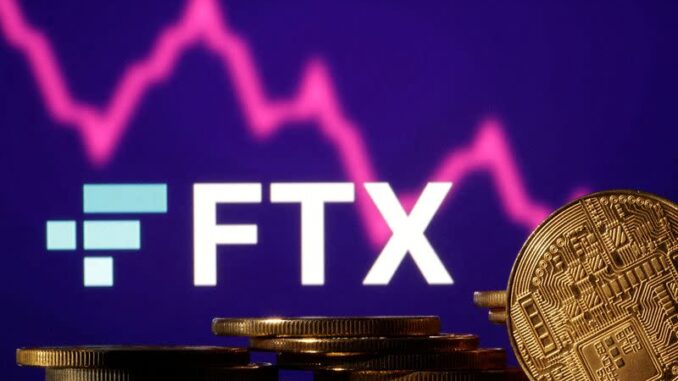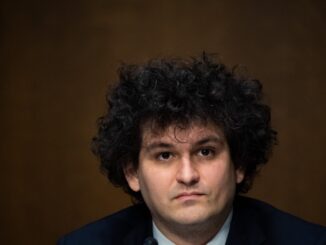
On Thursday, John Ray, III, the new CEO of FTX, dropped a long-awaited declaration in U.S. bankruptcy court, giving a sober assessment of the collapse of Sam Bankman-Fried’s crypto empire. The bankruptcy-court filing followed a whirlwind of events, including the publication of explosive texts Bankman-Fried sent to a Vox reporter earlier this week.
Ray set the tone for what he has found since FTX filed for bankruptcy protection last week, citing his 40 years of experience in the legal and restructuring business, including a role as chief restructuring officer and CEO of Enron, one of the biggest corporate collapses ever.
“Never in my career have I seen such a complete failure of corporate controls and such a complete absence of trustworthy financial information as occurred here,” Ray wrote. “This situation is unprecedented.”
Here are 10 revelations that Ray made in federal bankruptcy court on Thursday about Bankman-Fried and the FTX debacle he created.
1. Most of FTX’s digital assets have not been secured
As of Thursday, Ray made clear that while he now controls the various FTX trading and exchange platforms and Bankman-Fried’s crypto hedge fund Alameda Research, he’d “located and secured only a fraction of the digital assets” he hoped to recover. In fact, Ray said only some $740 million of cryptocurrency had been secured in new cold wallets. Ray cited at least $372 million of unauthorized transfers that had taken place on the day FTX and Alameda filed for bankruptcy last week, and the “dilutive ‘minting’ of approximately $300 million in FTT tokens by an unauthorized source” in the days after the filing. FTT tokens were created by FTX to facilitate trading on its exchange and made up a big chunk of Alameda’s assets.
2. Nobody knows who the biggest customer creditors are of FTX.
FTX.com and FTX.US had customers around the world who used its cryptocurrency exchanges and platforms. But Ray said he was unable to create a list of FTX’s top 50 creditors that included customers.
3. Alameda Research loaned $4.1 billion out to entities, including Bankman-Fried and his closest partners.
There have been reports that FTX lent out billions of dollars in customer funds to Bankman-Fried’s hedge fund, Alameda Research. But on Thursday, Ray revealed that Alameda had made $4.1 billion of related-party loans that remained outstanding at the end of September. This included a $1 billion loan Alameda made to Bankman-Fried himself, a $543 million loan made to FTX cofounder Nishad Singh, and $55 million borrowed by FTX co-CEO Ryan Salame.
4. FTX corporate funds were used to buy personal homes
Bankman-Fried lived in a luxury resort in the Bahamas, where FTX was also based. There, bankruptcy filings say, corporate funds of FTX “were used to purchase homes and other personal items for employees and advisors.” Ray said in his filing that there is no documentation for the transactions and loans associated with these real estate purchases, which were recorded in the personal name of employees and advisors.
5. Personalized emojis to approve disbursements
To demonstrate the lack of disbursement and appropriate business controls at FTX, Ray pointed out that FTX employees “submitted payment requests through an on-line ‘chat’ platform where a disparate group of supervisors approved disbursements by responding with personalized emojis.”
6. Alameda Research was one of the world’s biggest hedge funds
According to the bankruptcy filing, Alameda’s balance sheet showed $13.46 billion in total assets as of the end of September. That’s roughly equivalent to the assets managed by famous billionaire hedge fund traders like Bill Ackman, Paul Tudor Jones and Jeffrey Talpins.
7. Audit opinions from the metaverse
Bankman-Fried secured audit opinions for the international FTX trading platform part of his business from Prager Metis, a firm that Ray had never heard of before. Ray said he went to the firm’s website to learn more about it and discovered that Prager Metis described itself as the“first-ever CPA firm to officially open its Metaverse headquarters in the metaverse platform Decentraland.”
8. Alameda had a secret exemption on FTX.com
Ray’s filing on Thursday indicated that Bankman-Fried’s Alameda hedge fund might have had a trading edge on the FTX.com trading platform. According to the filing, Alameda had a “secret exemption” from “certain aspects of FTX.com’s auto-liquidation protocol.”
9. Customer liabilities are not reflected in FTX financial statements
Ray expects that the FTX.US exchange and trading platform, which serviced American customers, will have “significant liabilities arising from crypto assets deposited by customers through the FTX US platform.” He believes the FTX exchange that was used by FTX clients outside the U.S. could also have significant client liabilities. But none of these liabilities are reflected in the financial statements that were prepared while Bankman-Fried ran FTX, Ray said.
10. Ray has no confidence in any FTX balance sheet
Time and again in the filing, Ray offers the same disclaimer after detailing FTX-related financial statements. He notes that many of the balance sheets at FTX and Alameda are unaudited, and that because they were produced while Bankman-Fried ran and controlled the company, “I do not have confidence in it.”



